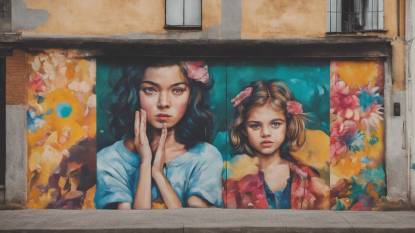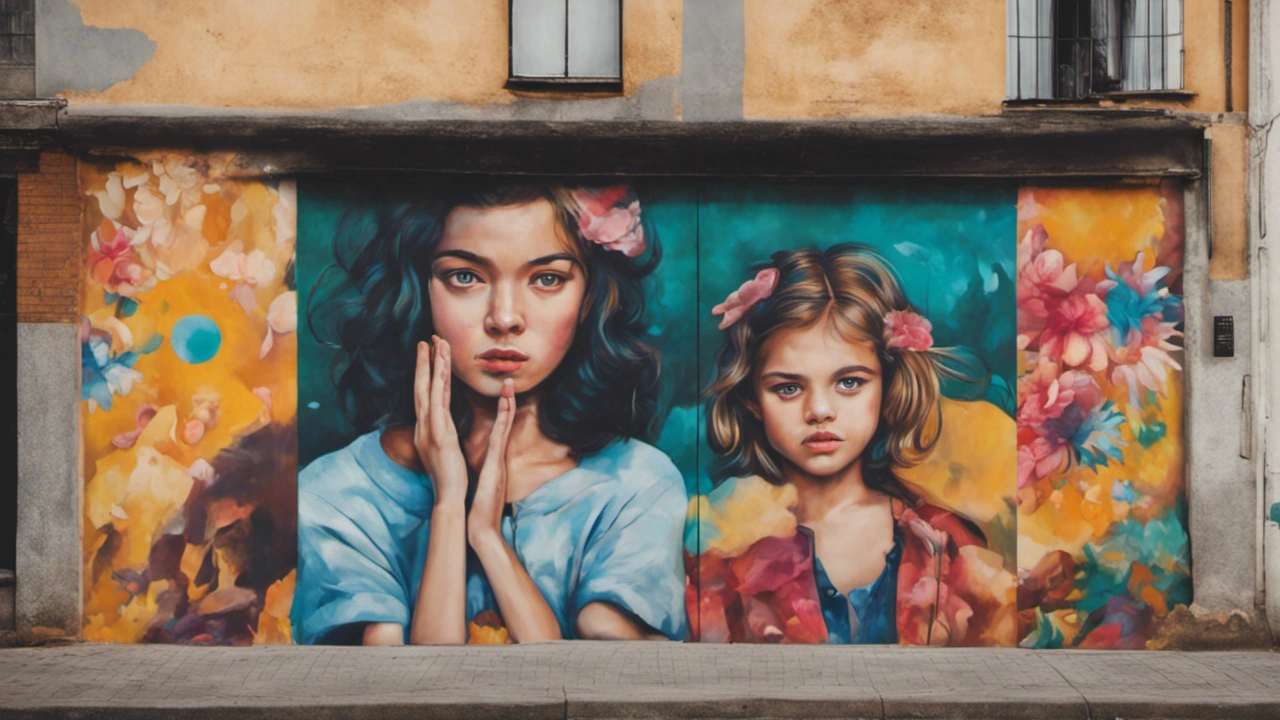
Ferrol Spain: Visitor's Guide to Start the Camino Inglés
Posted: | Updated:
Reading time: 40 minutes
Ferrol Spain: Visitor's Guide to Start the Camino Inglés
Posted: | Updated:
Reading time: 40 minutes
By: Simon Kemp, Editor
If you’re interested in learning more about the historical and cultural background of Ferrol, Spain, especially if you are considering embarking on a Camino Inglés pilgrimage , then you’ve come to the right place. Ferrol is a city in the province of A Coruña, in the northwest corner of Galicia, on the Atlantic coast. It has a rich and fascinating history, as well as a vibrant and diverse culture. Ferrol has a rich naval history and culture. It has a population of about 65,000 people and is the seventh largest city in Galicia.
Located near Cape Prior, which was known as Cape Nerium by the ancient Romans. Ferrol has a strategic harbour that has been used for naval and military purposes since the 16th century. Home to some impressive castles, such as the Castillo de San Felipe, which guards the entrance of the harbour. The city hosts several museums that showcase its naval heritage, such as the Exponav and the Museo Naval.
Key Takeaways
- Ferrol, Spain is a city in the A Coruña province in Galicia, on the Atlantic coast, with a rich naval and shipbuilding history. It is also one of the starting points of the English Way, a pilgrimage route to Santiago de Compostela.
- Ferrol dates back to ancient times, when it was a fishing port. It became a strategic naval base and arsenal in the 18th century, and was involved in several wars and battles. It also produced some influential figures, such as Franco and Iglesias.
- Ferrol has a diverse and dynamic culture, with music, theater, literature and art. It also has festivals and celebrations throughout the year, such as the Holy Week processions, the Poetry Festival and the Cider Festival.
- Ferrol has many attractions that showcase its heritage and beauty, such as the old town, the La Magdalena neighborhood, the La Cortina defensive walls, the castles of San Felipe and La Palma, and the beaches.
- Ferrol has several significant churches that reflect its religious and artistic legacy, such as the San Francisco church, the San Julián cathedral, the Capuchinas convent, the Nuestra Señora de los Dolores church and the La Merced church.
- Ferrol can be reached by plane, train or bus from different places in Spain and abroad. The closest airport is A Coruña (LCG), which is about 52 km or 32 miles away. The train station connects with other Galician cities. The bus company Alsa has daily connections from Madrid and other cities.
- Ferrol is divided into several districts, each with its own unique charm and character. These include A Cabana, A Graña, A Magdalena, A Malata, Canido, Caranza, Catabois, Ensanche A, Ensanche B, Esteiro, Ferrol Vello, Freixeiro, Inferniño, Recimil, San Xoán, Santa Mariña, and Serantes.
You can enjoy the sun and the sea on Ferrol’s beautiful beaches, like the Playa San Xurxo and Playa de Santa Comba. The views are also incredible. Vantage points, such as the Mirador de la Ermita de Chamorro and the Mirador Cabo Prior, are perfect for admiring the city and the landscape.
Ferrol is also one of the starting points of the English Way, a pilgrimage route to Santiago de Compostela, which attracts many visitors every year. Here are some of the highlights of this amazing city.
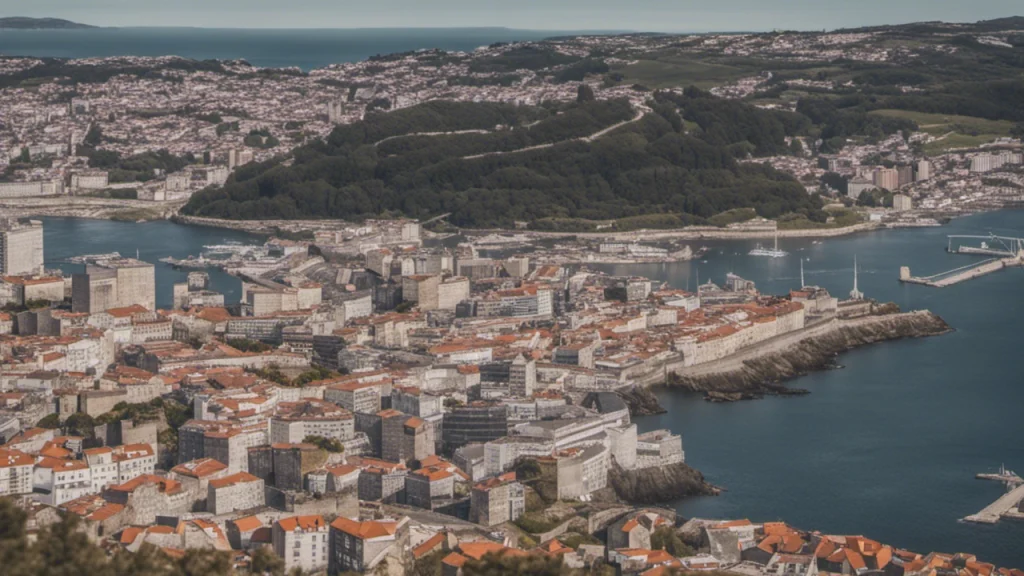
Why is Ferrol the Most Popular Starting Point of the Camino Inglés?
The Camino Inglés is one of the routes of the Camino de Santiago pilgrimage trail network. The Camino Inglés was traditionally taken by pilgrims from Northern Europe, especially Britain and Ireland, who arrived by boat to the Galician ports of Ferrol or A Coruña. From there, they continued their journey on foot to Santiago, following the yellow arrows and shells that mark the way.
The city of Ferrol is considered the start of the Camino Inglés because it is located more than 100 km or 62.2 miles from Santiago, which is the minimum distance required to obtain the Compostela, the official certificate of completion of the pilgrimage. Ferrol is also a historic naval city with a rich heritage and culture. Some of the attractions that pilgrims can visit in Ferrol are the Castillo de San Felipe, a 16th-century fortress that defended the entrance to the estuary; the Arsenal Militar, a naval shipyard that dates back to the 18th century; and the Magdalena district, a neoclassical area with elegant buildings and squares.
Celtic Camino route continuing from A Coruña
There is an alternative Camino Inglés route that starts from A Coruña, another important port city in Galicia. However, this route is only 75 km or 46.6 miles long, which means that pilgrims who start from A Coruña do not qualify for the Compostela unless they have previously walked at least 25 km or 15.53 miles in another Camino route. This option is known as the Celtic Camino and it allows pilgrims to combine walking stages in Ireland or Britain with the Camino Inglés from A Coruña. A Coruña is also a beautiful city with many attractions, such as the Tower of Hercules, a Roman lighthouse that is a UNESCO World Heritage Site; the Old Town, with its medieval churches and museums; and the Riazor beach, a popular spot for surfing and sunbathing.
How long does it take to walk the Camino Inglés from Ferrol?
The Camino Inglés from Ferrol to Santiago takes between 4 and 6 days to complete, depending on the pace and preferences of each pilgrim. The route is well marked and has a variety of accommodation options, such as public and private albergues, hotels, and guesthouses. The terrain is mostly flat or gently rolling, with some steep sections in the first two days. The scenery is a mix of coastal views, rural landscapes, forests, and towns. The Camino Inglés from A Coruña to Santiago can be done in 3 or 4 days and it follows a similar landscape and infrastructure as the route from Ferrol.
The Camino Inglés is a great option for pilgrims who want to experience a historic and authentic Camino route that is less crowded and busy than other more popular routes, such as the Camino Frances. The Camino Inglés offers a chance to discover the culture, history, and gastronomy of Galicia, as well as to meet fellow pilgrims from different backgrounds and countries. The Camino Inglés is also a rewarding spiritual journey that culminates in Santiago de Compostela, where pilgrims can visit the Cathedral, hug the statue of St. James, attend the Pilgrim’s Mass, and receive their Compostela.
Map of Ferrol, Galicia, Spain
Where is the start of the Camino Inglés in Ferrol?
The start of the Camino Inglés in Ferrol is marked by a large stone block with a scallop shell and a yellow arrow on Paseo Mariña, near the harbor. Behind the stone block, there is an archway that leads to a narrow road where you can follow the yellow arrows and scallop shells that will guide you along the way. The stone block that marks the beginning of the Camino Inglés is located on Paseo Mariña, a promenade that runs along the harbor and offers scenic views of the sea and the boats. The scallop shell and the yellow arrow are the main symbols of the Camino de Santiago, indicating the direction and distance of the route. The scallop shell also represents the pilgrim’s identity and faith.
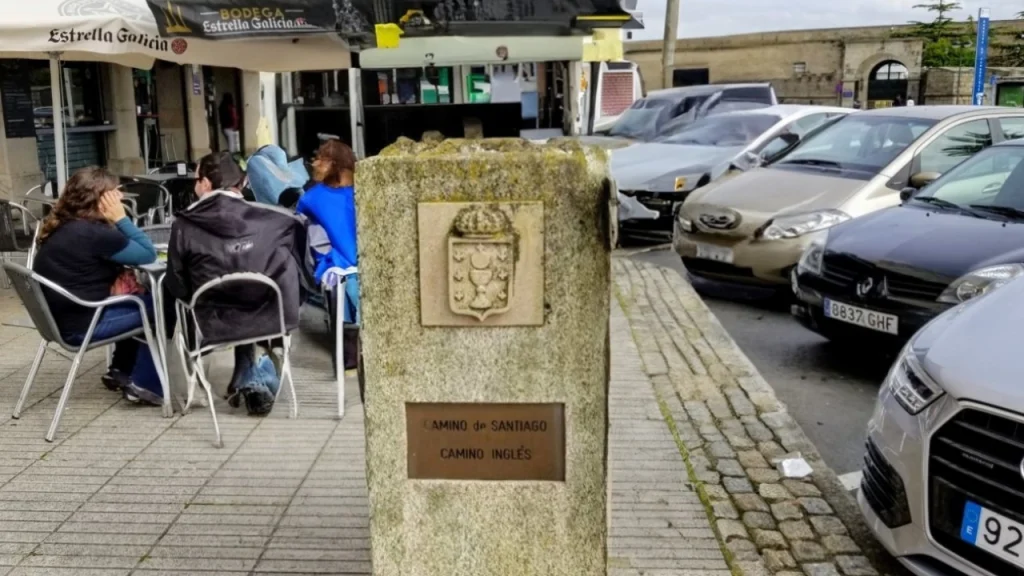
The archway behind the stone block leads to a narrow road called Rúa Real, which is part of the historic center of Ferrol. This road has many interesting buildings and monuments, such as the Church of San Francisco, the Town Hall, and the Jofre Theatre. Rúa Real ends at Plaza de Armas, where you can see another stone block with a scallop shell and a yellow arrow pointing to your left. From there, you will cross a bridge over the Mandeo river and continue along Rúa Magdalena until you reach another bridge over the Esmelle river. This is where you will leave Ferrol and enter into Narón, where you will find your first albergue (pilgrim hostel) after 6 km or 4 miles.
The first stage of the Camino Inglés from Ferrol to Santiago de Compostela is 29 km or 17 miles long and ends in Pontedeume, a charming town by the Eume estuary, stopping at Neda along the way. Along this stage, you will pass through rural areas, forests, villages, and churches. You will also enjoy beautiful views of the coast and the rías (coastal inlets). Some of the highlights of this stage are:
- The Monastery of San Martiño de Xubia: This is a Benedictine monastery founded in the 10th century. It has a Romanesque church with a Baroque facade and a cloister. It also has a museum that displays archaeological and artistic pieces related to the history of Ferrol and its surroundings.
- The Church of Santa María de Neda: This is a Romanesque church from the 12th century that has a Gothic portal and a Baroque tower. It also has a sculpture of Santiago Matamoros (St. James the Moor-slayer) on horseback.
- The Bridge of As Pías: This is a medieval bridge over the Belelle river that has five arches and two towers. It was part of an old defensive system that protected Pontedeume from attacks.
- The Castle of Andrade: This is a castle from the 14th century that belonged to the powerful Andrade family, who ruled over this area for centuries. It is located on a hill overlooking Pontedeume and offers panoramic views of the town and the estuary.
Best Albergues in Ferrol
Pilgrims and travelers in Ferrol are very well catered for as it has historic links with overseas and domestic Pilgrims. There are many Pilgrim’s Refuges and hotels but here are the top 5 Albergues to help you find a great place to stay:
Here are the top 5 Albergues, hostels & hotels in Ferrol:
- Albergue de peregrinos de Ferrol: This is a public hostel exclusively for pilgrims of the English Way with credentials. It’s located in the port area, at the Curuxeiras dock, about 600 m from the starting point of the English Way. It has 60 beds distributed in 3 shared dormitories.
- Address: C/ Estrada Alta, 25, Ferrol, La Coruña, Spain
- Phone: Not available
- The Camp Doniños: Located near the beaches of Doniños and San Jorge, this hostel is ideal for those learning or practicing surf. It offers facilities for other active tourism activities and has rooms with bunk beds and shared bathrooms.
- Address: San Jorge de la Marina, nº8, Vila da Area, Ferrol, 15592
- Phone: +34 605 182 537
- Ferrol Surf & Yoga House: This establishment is located in A Cabana, a few minutes drive from Ferrol and 8 wonderful beaches, ideal for surfing, bodyboarding, etc. It offers surf school services with certified monitors and yoga.
- Address: 120, A Cabana, Montecoruto, Ferrol, 15590
- Phone: Not available
- Hostal La Frontera: Located in the heart of Ferrol, this hostel offers free WiFi throughout the property. All rooms come with a flat-screen satellite TV, heating and a private bathroom.
- Address: Calle San Andrés, 4, 15403 Ferrol, A Coruña, Spain
- Phone: +34 881 95 30 36
- Choyo 2: Located within 2.6 km of Caranza and 37 km of Marina Sada, Choyo 2 provides free WiFi throughout the property. All rooms include a wardrobe, a desk, a TV and a private bathroom.
- Address: Carlos III 67, 15403 Ferrol, Spain
- Phone: Not available
The Ancient History of Ferrol
Ferrol’s origins date back to ancient times, when it was a fishing port called Burum or Arotebrarum Portum by the Romans. It was part of the Portus Magnus Artabrorum, the great port of the Artabri, a Celtic tribe that inhabited the region. The name Ferrol is probably derived from Ferreolus, a Latin personal name that may have belonged to a local landowner.
Ferrol’s development as a naval and shipbuilding center began in the 18th century, when King Philip V recognized its strategic value and built the arsenal in A Graña and the shipyards. Ferrol became the main base of the Spanish Navy in the North Atlantic, and was involved in several wars and battles with England and France. The naval engineers designed the A Magdalena neighborhood, with a geometric layout typical of the Enlightenment. It became one of the most populous and prosperous cities in Galicia, reaching 20,000 inhabitants by the end of the century.
Ferrol’s importance continued in the 19th and 20th centuries, when it produced some of the first steam and iron ships in Spain, and hosted several royal visits. In 1858, it was granted the title of city by Queen Isabella II. During the Spanish Civil War, Ferrol was a stronghold of Franco’s forces, and played a key role in the construction, repair and supply of ships. After the war, it benefited from the state’s support and reactivated its naval industry, employing 20,000 workers and reaching 77,000 inhabitants by 1950.
Ferrol’s decline started in the 20th century, when the naval industry faced economic and political crises. Many shipyards closed or reduced their activity, and many workers lost their jobs or emigrated. Ferrol also suffered from urban decay and social problems. However, in recent years, Ferrol has been undergoing a process of regeneration and revitalization. It has invested in culture, tourism, education and innovation. It has also preserved and restored its historical and artistic heritage.
Notable People from Ferrol
If you are interested in learning about some of the notable people who were born or lived in Ferrol, Spain, you might be surprised by the diversity and influence of some of the personalities that have a connection to this city. Here are some of the famous names that have a link to Ferrol:
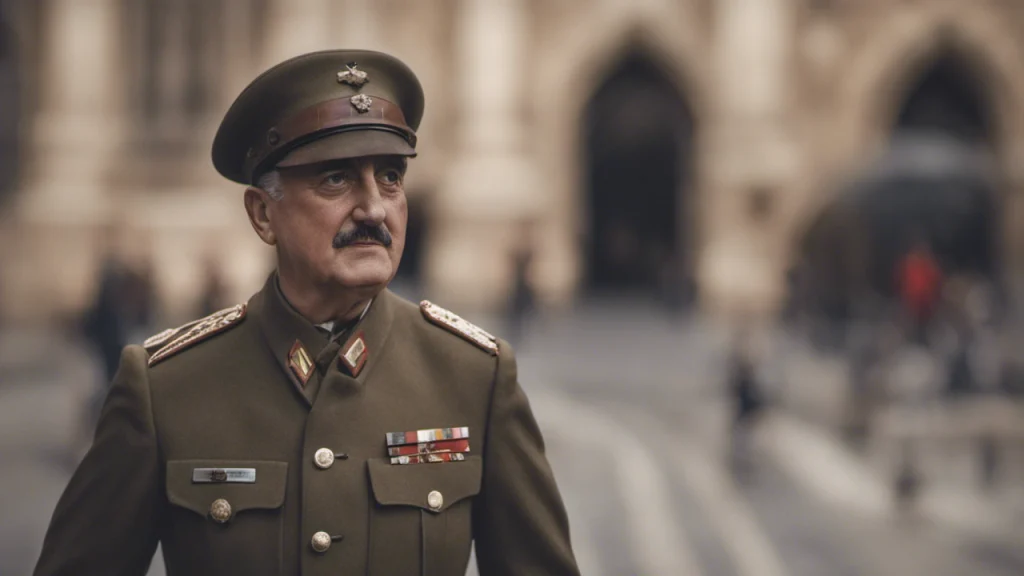
Francisco Franco
Ferrol was the birthplace of Franco, the dictator who ruled Spain from 1939 to 1975, after leading a military coup against the democratic republic in the Spanish Civil War. He was born in Ferrol in 1892, and his family had a naval tradition. He joined the army at a young age and rose through the ranks, becoming the youngest general in Europe in 1926. He suppressed any opposition to his regime, banned political parties and trade unions, censored the media, and enforced a conservative and nationalist ideology. He died in Madrid in 1975, and his body was buried in the Valley of the Fallen, a monumental complex built by forced laborers during his dictatorship. The city was officially named after Franco as “El Ferrol del Caudillo” from 1938 to 1982.
Pablo Iglesias
Continuing the political theme, Ferrol was also the birthplace of Pablo Iglesias was the founder of the Spanish Socialist Workers’ Party (PSOE), the oldest and one of the largest political parties in Spain. He was born in Ferrol in 1850, and his father was a blacksmith. He moved to Madrid when he was 14 and worked as a printer, journalist, and teacher. He became involved in the labor movement and advocated for social reforms and workers’ rights. He founded the PSOE in 1879, along with other socialist intellectuals and activists. He also founded the General Union of Workers (UGT), a trade union affiliated with the PSOE. He was elected to the parliament several times, and he died in Madrid in 1925.
Gonzalo Torrente Ballester
Ballester was one of the most important Spanish writers of the 20th century, and a member of the Royal Spanish Academy. He was born in Ferrol in 1910, and he studied law and literature at various universities. He fought on Franco’s side in the Civil War, but later became critical of his regime. He wrote novels, essays, plays, and scripts, blending realism, fantasy, history, and humor. Some of his most famous works are The Saga/Fuga of J.B., The Island of Thursday, and The End of San Simón. He received many awards for his literary achievements, including the Cervantes Prize, the highest honor for Spanish-language literature. He died in Salamanca in 1999.
Ferrol Festivals & Culture
Ferrol’s culture is diverse and dynamic, reflecting its maritime heritage and its connections with other countries and regions. It has a strong tradition of music, theater, literature and art, as well as festivals and celebrations throughout the year. Some of the most popular ones are:
- The Holy Week processions, declared of International Tourist Interest, which feature impressive religious images carried by hooded penitents along the streets.
- The Festival Internacional de Poesía do Condado de Ferrolterra (International Poetry Festival of Ferrol County), which gathers poets from all over the world to share their works and experiences.
- The Festival de Cine de Terror de Narón (Narón Horror Film Festival), which showcases horror films from different genres and countries.
- The Festa da Sidra (Cider Festival), which celebrates this typical drink made from fermented apple juice.
- The Festa da Maruxaina (Mermaid Festival), which honors a mythical creature that lives in the sea near San Cibrao.
Main Attractions in Ferrol
If you are looking for a destination that combines history, culture and nature, you might want to consider visiting Ferrol, a city in the province of A Coruña in Galicia, on the Atlantic coast of north-western Spain. Ferrol is the seventh largest city in Galicia, with a population of about 65,000 people. It has a rich maritime heritage, as it was once a major naval and shipbuilding centre for the Spanish crown. Ferrol also has a remarkable architectural legacy, with examples of Romanesque, Baroque, Neoclassical and Modernist styles. In this blog post, I will share with you some of the main attractions and highlights of this fascinating city.
Ferrol old town: This is the historical core of the city, where you can admire the medieval layout of narrow streets and squares. Here you can find some of the oldest buildings in Ferrol, such as the Church of San Francisco (13th century), the Church of San Julián (14th century) and the Convent of Santo Domingo (16th century). You can also visit the Archaeological Museum, housed in a former military barracks, where you can learn about the prehistoric, Roman and medieval history of Ferrol.
La Magdalena neighbourhood: This is the most emblematic area of Ferrol, where you can see the influence of the Modernist movement that flourished in the late 19th and early 20th centuries. The neighbourhood was designed by Rodolfo Ucha Piñeiro, a disciple of Antoni Gaudí, and features elegant buildings with ornamental facades, balconies and towers. Some of the most notable examples are the Jofre Theatre, the Casino Ferrolano and the Town Hall.
La Cortina defensive walls: These are the remains of the fortifications that protected Ferrol from enemy attacks in the 18th century. They were built by order of King Felipe V, who wanted to make Ferrol the main naval base of his empire. The walls had four gates and several bastions, and were surrounded by a moat. You can walk along some sections of the walls and enjoy the views of the harbour and the city.
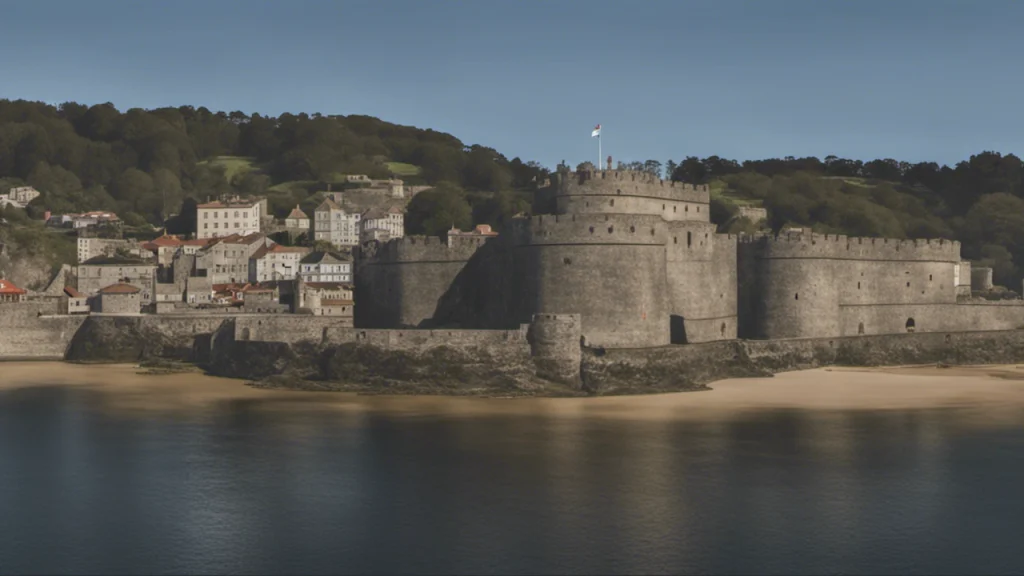
Castles of San Felipe and La Palma: These are two impressive fortresses that guarded the entrance to the Ferrol Inlet, forming part of a defensive system that also included other smaller forts and batteries. The Castle of San Felipe dates back to the 16th century, but was enlarged and reinforced in later centuries. It has a pentagonal shape and a drawbridge over a ditch. The Castle of La Palma was built in the 18th century, and has a rectangular shape with four bastions. Both castles are open to visitors and offer guided tours.
Beaches: Ferrol has a privileged location on the Atlantic coast, with more than 10 kilometres of sandy beaches that offer ideal conditions for surfing, sailing and other water sports. Some of the most popular beaches are Doniños, San Jorge, Esmelle and Santa Comba. You can also enjoy the natural beauty of the dunes, lagoons and cliffs that surround them.
Easter Week celebrations: This is one of the most important events in Ferrol, which has been declared as an International Tourist Interest. It is a religious festival that commemorates the Passion, Death and Resurrection of Jesus Christ through processions, ceremonies and music. The processions are organized by different brotherhoods that carry elaborate floats with images of Christ and Mary. The processions take place along the streets of Ferrol old town and La Magdalena neighbourhood, creating a solemn and emotional atmosphere.
Important Churches in Ferrol
You might want to check out some of the notable churches and cathedrals that showcase the rich history and culture of this maritime town. Here are some of the most impressive ones that you should not miss, they are not only places of worship, but also monuments of art, history and culture that reflect the identity and spirit of this city.
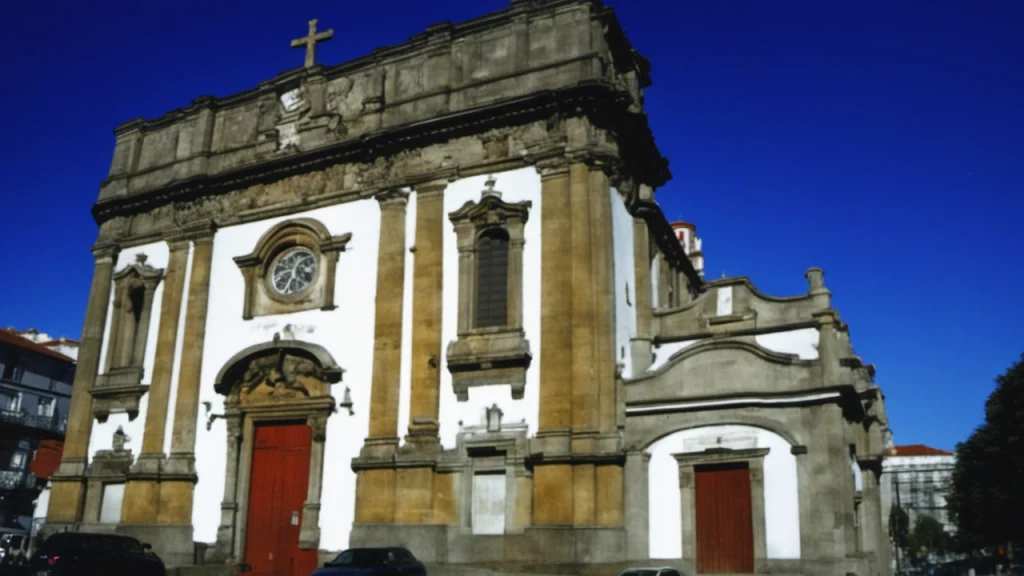
Iglesia San Francisco
This is a very beautiful church in el Ferrol close to the Spanish naval docks. The views from the top are excellent and sure to impress you. The church was built in the 18th century and has a Baroque style with a Latin cross plan. The interior is decorated with paintings, sculptures and altarpieces. The church also houses the tomb of the famous Galician poet Curros Enríquez .
Catedral de San Julian
This is a pretty church in a quiet square in the center of Ferrol. It has a contrasting white paintwork with a blue dome that stands out in the skyline. The church was built in the 18th century and has a Neoclassical style with a Greek cross plan. The interior is spacious and elegant, with marble columns, arches and vaults. The church is dedicated to San Julian, the patron saint of Ferrol .
Convento de las Capuchinas
This is a convent and church that belongs to the Order of the Capuchin Poor Clares. It was founded in 1726 by Maria Francisca de la Gándara, a noblewoman who donated her fortune to the nuns. The church has a simple facade with a single bell tower and a triangular pediment. The interior is cozy and serene, with wooden choir stalls, paintings and statues. The convent also has a museum that displays religious art and objects .
Iglesia de Nuestra Señora de los Dolores
This is a church that was built in 1757 by the Brotherhood of Our Lady of Sorrows, a religious association that helped the poor and sick. The church has a Baroque style with a rectangular plan and a single nave. The facade has two towers with spires and a central niche with a statue of the Virgin Mary. The interior is richly decorated with gold leaf, carvings and paintings. The church also has a crypt where some prominent figures of Ferrol are buried .
Iglesia de la Merced
This is a church that was built in 1765 by the Order of Mercy, a religious order that ransomed Christian captives from the Muslims. The church has a Neoclassical style with a rectangular plan and a single nave. The facade has four columns with Corinthian capitals and a triangular pediment with a coat of arms. The interior is sober and elegant, with marble altars, paintings and sculptures. The church also has a cloister that connects to the former convent .
Travel options: How to get to Ferrol
If you are planning to visit Ferrol, a beautiful city in the northwestern coast of Spain, you might be wondering how to get there using public transportation. Ferrol is the main starting point of the English Way, one of the routes of the Camino de Santiago, and it has a rich maritime and military history. In this blog post, I will show you how to get to Ferrol by plane, train and bus, depending on where you are coming from.
Fly to Ferrol by Plane
The closest airport to Ferrol is A Coruña (LCG), which is about 52 km away. You can fly to A Coruña from several Spanish cities, such as Madrid, Barcelona, Sevilla or Bilbao, with airlines like Iberia, Vueling or Air Europa. From the airport, you can take a taxi or a bus (line 40519) to the city center of A Coruña, where you can catch another bus or train to Ferrol.
Take the Train to Ferrol
Ferrol has a train station that connects it with other Galician cities, such as Santiago de Compostela, A Coruña, Vigo or Ourense. The train company is Renfe Viajeros, and you can check the timetables and prices on their website. The train journey from Santiago de Compostela to Ferrol takes about 1 hour and 52 minutes and costs between 12 and 17 euros. The train journey from A Coruña to Ferrol takes about 1 hour and 14 minutes and costs between 7 and 11 euros.
Travel by Bus to Ferrol
Taking the bus is another option to get to Ferrol from different places in Spain and abroad. The main bus company is Alsa, which has daily connections from Madrid (both from the city center and the airport), Ponferrada, Zamora, Sevilla, Portugal, Germany, Belgium, France and Switzerland. The bus journey from Madrid to Ferrol takes about 8 hours and costs between 40 and 60 euros. The bus journey from Sevilla to Ferrol takes about 14 hours and costs between 60 and 80 euros.
Another bus company that operates in Galicia is Monbus, which offers several daily connections from Santiago de Compostela and Vigo to Ferrol. The bus journey from Santiago de Compostela to Ferrol takes about 1 hour and 30 minutes and costs between 6 and 10 euros. The bus journey from Vigo to Ferrol takes about 2 hours and 30 minutes and costs between 10 and 15 euros.
A third bus company that operates in Galicia is Arriva Noroeste, which offers frequent connections from A Coruña to Ferrol throughout the day. The bus journey from A Coruña to Ferrol takes about 45 minutes and costs between 3 and 5 euros.
Exploring Ferrol Neighborhoods
Ferrol is divided into several districts, each with its own history, culture and attractions. In this blog post, I will give you a more detailed overview of some of the most popular and interesting areas of Ferrol, and what you can expect to find there. Ferrol is divided into several districts, each with its own history, culture and attractions. In this blog post, I will give you a more detailed overview of some of the most popular and interesting areas of Ferrol, and what you can expect to find there.
Ferrol Vello (Ferrol Old Town)
The old town of Ferrol is the historical and cultural heart of the city. It is where you can find some of the most emblematic buildings and monuments of Ferrol, such as the La Cortina defensive walls (18th century), the San Francisco church (14th century), the San Julián cathedral (18th century), and the Jofre theatre (19th century). The old town also has a lively atmosphere, with many bars, restaurants, shops and museums to explore.
This is the oldest part of Ferrol, located near the port and the estuary. Ferrol Vello preserves the charm of a fishing village, with narrow streets, colorful houses and traditional markets. Here you can also visit the Castle of San Felipe, a fortress that defended Ferrol from several attacks throughout history, such as the English raid in 1594 and the French invasion in 1809. The castle offers stunning views of the sea and the city.
Ferrol Vello is located on a peninsula that separates the inner and outer harbors of Ferrol. It was the first settlement of the city, founded in the 11th century by the monks of San Martiño de Xuvia. The neighborhood grew around the port, where ships from all over the world arrived to trade and repair. Ferrol Vello was also the birthplace of many illustrious figures, such as the writer Concepción Arenal, the painter Juan Pérez Villamil and the admiral Cosme Damián Churruca.
Today, Ferrol Vello is a protected historic site, with many buildings dating back to the 18th and 19th centuries. Some of them are in ruins, but others have been restored and converted into museums, cultural centers and restaurants. Here are some of the highlights that you should not miss:
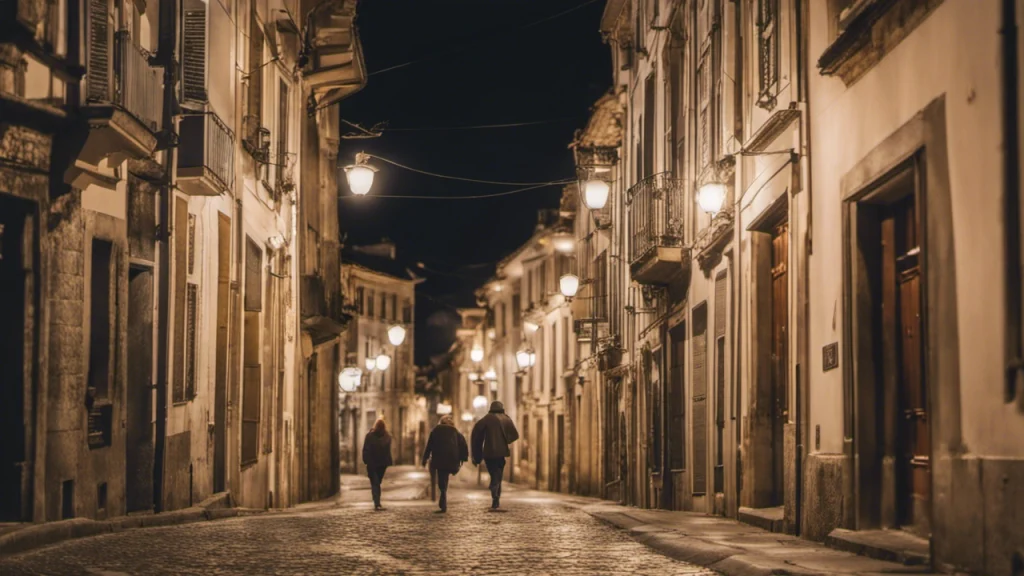
Ferrol Vello Visitor Highlights:
- The Naval Museum, which showcases the naval history and heritage of Ferrol and Spain. It has exhibits on shipbuilding, navigation, naval warfare, cartography, uniforms, weapons and more. The museum is located in the former naval arsenal, a monumental complex that dates back to the 18th century. The entrance fee is 3 euros for adults and free for children under 18. The museum is open from Tuesday to Sunday, from 10:00 to 14:00 and from 16:00 to 19:00.
- The Exponav, which is the largest shipbuilding museum in Europe. It displays models, plans, tools, machinery and documents related to the shipbuilding industry of Ferrol and Spain. It also has interactive exhibits and audiovisuals that explain the process and techniques of shipbuilding. The museum is located in the former naval hospital, another impressive building from the 18th century. The entrance fee is 4 euros for adults and free for children under 12. The museum is open from Tuesday to Sunday, from 10:30 to 14:30 and from 16:00 to 20:00.
- The Concepción Arenal House-Museum, which is dedicated to the life and work of Concepción Arenal, a prominent Spanish writer, feminist and social reformer who was born in Ferrol in 1820. The museum displays her personal belongings, manuscripts, books and portraits. It also offers guided tours and cultural activities. The museum is located in her birthplace, a typical Galician house from the 19th century. The entrance fee is 2 euros for adults and free for children under 12. The museum is open from Tuesday to Saturday, from 10:00 to 14:00 and from 16:00 to 20:00.
- The Co-Cathedral of San Julián, a neoclassical church built in 1778 that serves as the seat of the bishopric of Mondoñedo-Ferrol. It has a beautiful façade with four columns and a triangular pediment, and a dome that dominates the skyline of Ferrol. Inside, you can admire the altarpiece of San Julián, the patron saint of Ferrol, and the paintings by Francisco de Goya and Zacarías González Velázquez.
- The Church of San Francisco, a baroque church built in 1757 by the Franciscan order. It has a simple exterior with a single tower, but a rich interior with a carved wooden ceiling, an impressive organ and several chapels dedicated to different saints. The church also houses a museum of sacred art, where you can see relics, sculptures and paintings from different periods.
- The Castro de Ferrol, an archaeological site located on a hill overlooking Ferrol Vello. It is a Celtic settlement that dates back to the 4th century BC, where you can see the remains of stone houses, walls and defensive structures. You can also visit a small museum that displays some artifacts found on site, such as pottery, coins and jewelry.
Places to Eat in Ferrol Old Town
Ferrol Vello is not only a place to visit, but also to live and enjoy. The neighborhood has a lively social and cultural scene, with many associations, events and festivals throughout the year. You can also find some of the best restaurants and bars in Ferrol, where you can taste the local cuisine and specialties, such as seafood, empanada (a savory pie), caldo gallego (a soup) or tarta de Santiago (an almond cake). Here are some recommendations:
- Mesón do Pulpo, which specializes in octopus dishes, such as pulpo á feira (octopus with paprika and olive oil) or pulpo con cachelos (octopus with potatoes). It also serves other Galician delicacies, such as empanada (savory pie), pimientos de Padrón (fried green peppers) or lacón con grelos (pork shoulder with turnip greens). The restaurant is cozy and rustic, with wooden tables and barrels. The average price per person is around 15 euros.
- Taberna da Aduana, which offers traditional Galician cuisine with a modern twist. It has a varied menu that includes salads, soups, tapas, meats, fish and desserts. Some of their specialties are croquetas de bacalao (cod croquettes), ensalada de queso de Arzúa (cheese salad), caldo gallego (Galician broth) or tarta de Santiago (almond cake). The restaurant is elegant and spacious, with stone walls and wooden beams. The average price per person is around 20 euros.
- Café Bar O Parrulo, which is a popular spot for breakfast, coffee or snacks. It has a wide selection of pastries, sandwiches, cakes and drinks. Some of their bestsellers are torrijas (bread pudding), bocadillo de jamón ibérico (ham sandwich), tarta de queso (cheesecake) or café con leche (coffee with milk). The café is cozy and charming, with colorful tiles and posters. The average price per person is around 5 euros.
- El Coral, a food court located in an old fish market building. It offers a variety of stalls where you can choose from different dishes and drinks, such as tapas (small bites), burgers, pizzas or cocktails. You can also enjoy live music and performances on weekends.
- Taberna de Anca, a traditional tavern that serves homemade food with fresh ingredients. It is famous for its croquetas (fried balls of béchamel sauce with different fillings), tortilla (Spanish omelet) or pulpo á feira (octopus with paprika). You can also try some local wines or beers.
- A Barca de Abaixo, a hamlet located near Ferrol Vello, where you can find some of the best seafood restaurants in the area. You can savor the freshest fish and shellfish, such as mussels, clams, crabs or lobsters, cooked in different ways. You can also enjoy the views of the harbor and the boats
Some places to drink in the old town are:
- La Clandestina, which is a trendy cocktail bar that mixes classic and creative drinks. It has a cozy and intimate atmosphere, with dim lights and vintage furniture. Some of their signature cocktails are mojito, daiquiri, margarita or caipirinha. They also have a selection of wines, beers and spirits. The average price per drink is around 6 euros.
- La Estrella, which is a traditional tavern that serves local wines and beers. It has a friendly and lively atmosphere, with wooden barrels and tables. Some of their recommended wines are albariño, mencía or godello. They also have a variety of beers, such as Estrella Galicia, Mahou or Guinness. The average price per drink is around 3 euros.
- O Recuncho, which is a cozy pub that plays rock and pop music. It has a casual and fun atmosphere, with posters and memorabilia. Some of their popular drinks are gin tonic, whisky or cider. They also have a jukebox, a dartboard and a pool table. The average price per drink is around 4 euros.
Some places to shop in the old town are:
- Mercado de la Magdalena, which is the main market of Ferrol. It has stalls that sell fresh produce, such as fruits, vegetables, meat, fish, cheese, bread and more. It also has shops that sell clothes, accessories, souvenirs and more. The market is open from Monday to Saturday, from 9:00 to 14:00 and from 17:00 to 20:00.
- Calle Real, which is the main shopping street of Ferrol. It has a variety of stores that sell fashion, jewelry, shoes, books, electronics and more. Some of the well-known brands that can be found here are Zara, Mango, H&M, El Corte Inglés and more. The street is also pedestrianized and has benches and fountains.
- Centro Comercial Odeón, which is the largest shopping mall of Ferrol. It has more than 100 stores that sell clothing, cosmetics, toys, sports, home and more. Some of the major brands that can be found here are Primark, Decathlon, Media Markt, Leroy Merlin and more. The mall also has a cinema, a bowling alley, a food court and a children’s area. The mall is open from Monday to Saturday, from 10:00 to 22:00.
Some places to relax in the old town are:
- Parque Reina Sofía, which is a large park that has gardens, fountains, statues and playgrounds. It is a nice place to enjoy nature, have a picnic or play with children. The park also has a pond with ducks and swans.
- Plaza de Armas, which is the main square of Ferrol. It has a beautiful fountain, a monument to Concepción Arenal and several cafés and terraces. It is a good place to sit and watch people or have a drink.
- Paseo Marítimo, which is the promenade that runs along the Ferrol Inlet. It has stunning views of the sea, the port and the castles. It is a great place to walk, bike or skate.
A Magdalena
A Magdalena is a district of the city of Ferrol in Spain, located in the heart of the city. It is a historic and artistic site that dates back to the 18th century, when it was designed by naval engineers to accommodate the growing population of Ferrol due to its military and naval importance. The district has a rationalist and grid-like layout, with six parallel streets crossed by nine perpendicular ones, forming rectangular blocks of houses. The houses are mostly two or three stories high, with white wooden galleries that resemble the sterns of ships. These galleries are a distinctive feature of Ferrol and influenced the architecture of other parts of Galicia.
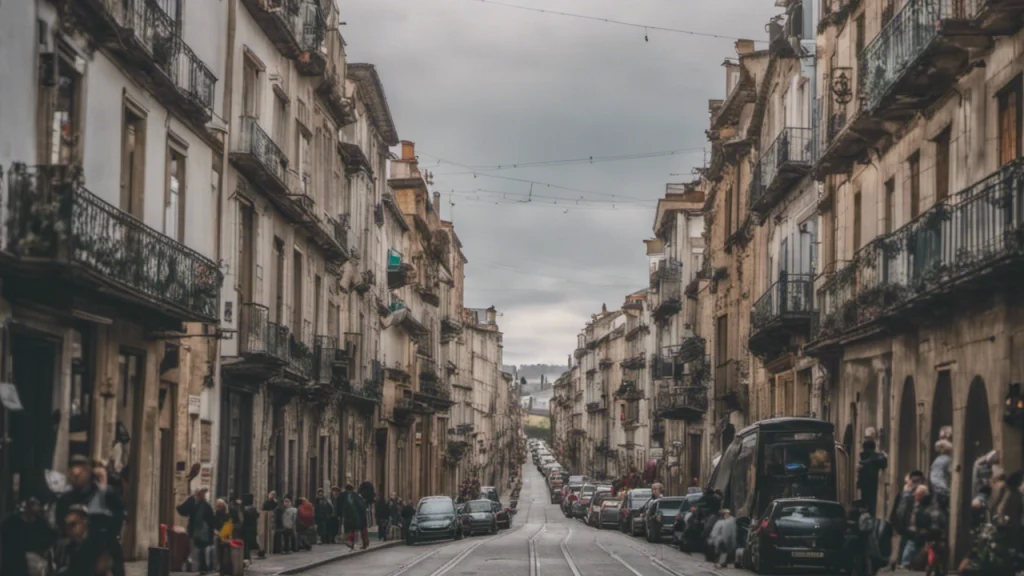
The district also has many modernist buildings from the early 20th century, designed by the architect Rodolfo Ucha. Some of the most emblematic monuments of Ferrol are located in A Magdalena, such as the Jofre Theater, the San Julian Cathedral, the Magdalena Fish Market, the Town Hall and the Afundación Headquarters. The district is partly pedestrianized and has many shops, restaurants and cafes. It is a lively and charming place to explore and enjoy the culture and history of Ferrol.
A Magdalena is not exactly the same as Ferrol Old Town, although it is part of it. Ferrol Old Town is a broader term that includes other districts such as La Cortina, Canido or Esteiro, which have different origins and characteristics than A Magdalena. Ferrol Old Town is also known as Ferrol Vello, and it is the oldest part of the city, where the first settlements were established. A Magdalena, on the other hand, is a newer district that was built in the 18th century as an extension of the city to accommodate the naval and military activity. A Magdalena is the most central and commercial district of Ferrol, and it has a distinctive grid-like layout and white wooden galleries. It is a historic and artistic site that showcases the neoclassical and modernist architecture.
Caranza
This is a modern and residential area of Ferrol, located on the opposite side of the estuary from Ferrol Vello. Caranza has a large park, a sports complex and a marina, as well as many schools and services. Caranza is also known for hosting the annual Festa da Xuventude, a music festival that attracts thousands of young people every summer. The festival features local and national bands, DJs, workshops and activities.
If you are looking for a relaxing and scenic destination in Galicia, Spain, you might want to consider visiting Caranza, a district of Ferrol that lies on the shores of the Ferrol Estuary. Caranza is a relatively new neighborhood, built in the 1970s to accommodate the families displaced from the old Esteiro district, which was demolished for urban planning reasons. Today, Caranza is a lively and diverse community that offers a variety of attractions and activities for visitors.
One of the main attractions of Caranza is its artificial beach, which has white sand and calm waters. The beach is accessible for people with disabilities, and has parking, showers, first aid, seasonal kiosks and urban transport services. The beach also has a beautiful promenade where you can enjoy the views of the estuary and the boats. If you are feeling adventurous, you can try windsurfing at the school that operates on the beach.
Another attraction of Caranza is its cultural and social life. The district has several facilities that host events and activities for all ages and interests. For example, you can visit the Club Galicia de Caranza, a sports and cultural association that has a soccer field, a swimming pool, a gym, a library, a cafeteria and a theater. The club organizes tournaments, courses, workshops, concerts and festivals throughout the year. You can also check out the Centro Sociocomunitario de Caranza, a social center that offers educational, recreational and health services for the residents of the district. The center has a cafeteria where you can enjoy a coffee or a snack with the locals.
If you want to explore more of Ferrol and its surroundings, you can easily access other places of interest from Caranza. You can take a bus or a taxi to the city center, where you can visit the naval museum, the castle of San Felipe, the modernist buildings and the traditional markets. You can also take a ferry to Mugardos, a charming fishing village that is famous for its octopus dish. Or you can drive to A Coruña, a vibrant city that has many attractions such as the Tower of Hercules, the aquarium, the old town and the beaches.
Canido
This is a cultural and artistic area of Ferrol, located near A Magdalena. One of the most famous and colorful features of Canido is the Meninas de Canido, a street-art project that started in 2008 and has transformed the walls of the neighborhood into a giant open-air gallery. The Meninas are inspired by the famous painting by Velázquez, but each artist has given them their own style and personality. You can find more than 300 Meninas scattered around Canido, each one with a different story to tell. You can visit the official website of the project to learn more about it and see a map of the locations.
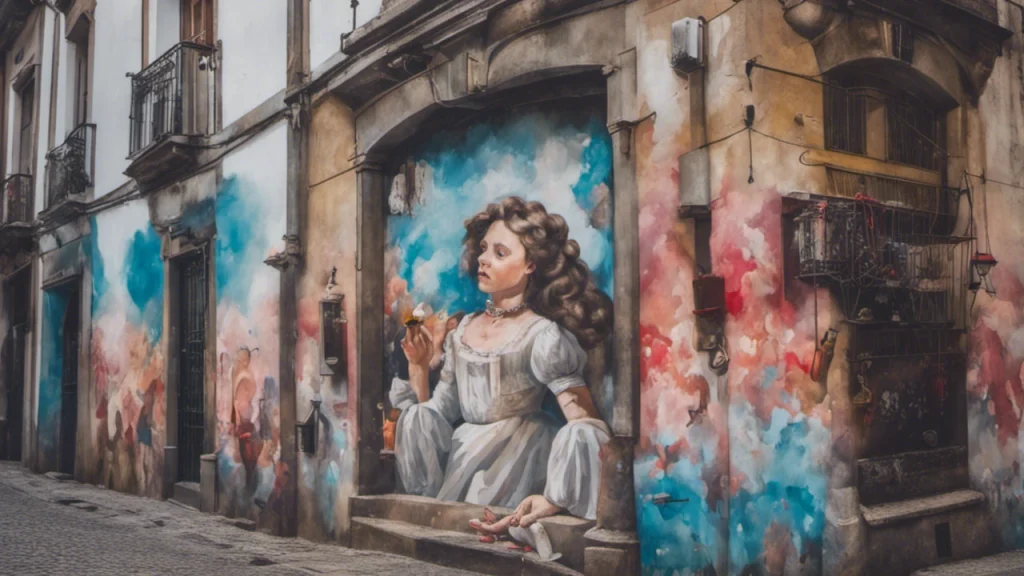
Another attraction that you can’t miss in Canido is the Ferrol of the Enlightenment, a historical and architectural ensemble that reflects the importance of Ferrol as a naval and military base in the 18th century. You can admire the impressive buildings, such as the Arsenal, the Dockyards, the Castle of San Felipe and the Castle of La Palma, that showcase the engineering and design skills of that era. Ferrol of the Enlightenment is a candidate to become a World Heritage Site by UNESCO.
If you are looking for some nature and relaxation, you can head to one of the many beaches that surround Ferrol. You can choose from urban beaches, such as Doniños or San Jorge, or wilder ones, such as Santa Comba or Esmelle. Ferrol is also a paradise for surfers, as it offers some of the best waves in Galicia. You can find surf schools and equipment rental in many of the beaches.
Finally, if you want to taste some of the local cuisine, you can visit one of the many restaurants and bars that offer delicious dishes and drinks. You can try some of the typical Galician specialties, such as pulpo á feira (octopus with paprika), empanada (savory pie), pimientos de Padrón (fried green peppers) or tarta de Santiago (almond cake). You can also enjoy some of the fresh seafood and fish that come from the Atlantic Ocean. A good place to try some of these delicacies is O Furancho do Canido, a cozy restaurant that offers homemade food and friendly service.
Esteiro
This is an industrial and working-class area of Ferrol, located near the shipyards and the naval museum. Esteiro has a strong identity and a sense of community, as well as many associations and social movements. Esteiro is also the birthplace of some of the most prominent figures of Ferrol, such as the writer Gonzalo Torrente Ballester, who won the Cervantes Prize in 1985; and the dictator Francisco Franco, who ruled Spain from 1939 to 1975. Esteiro is a charming neighborhood that combines history, culture, nature and gastronomy.
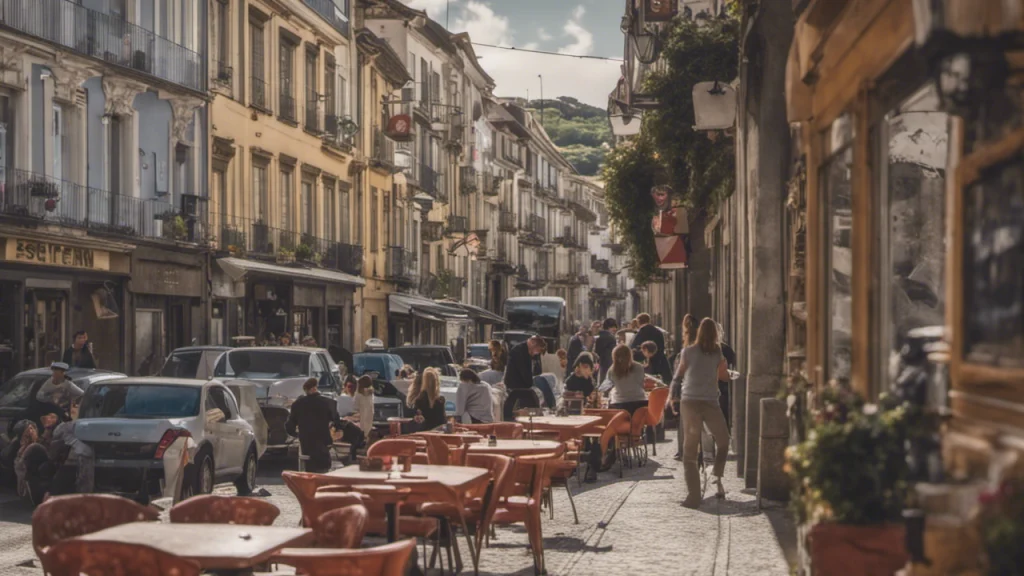
Esteiro is located on the northwest slope of the Monte Esteiro, near the mouth of the Ferrol river. It is one of the oldest and most traditional neighborhoods in Ferrol, dating back to the 18th century, when it was the site of the Reales Astilleros de Esteiro (Esteiro Royal Dockyards), a royal shipyard that built some of the most impressive warships of the Spanish Navy. You can still see some of the remains of the shipyard, such as the barracks, workshops and warehouses, as well as some of the ships that were built there, such as the Santa Ana and the Salvador del Mundo, both 112-gun ships of the line.
Esteiro is also home to the University of A Coruña Campus de Ferrol, which offers degrees in engineering, architecture, naval studies and health sciences. The campus is located in a modern building that contrasts with the historical surroundings. It is a lively and dynamic place that attracts students and researchers from all over the world.
One of the main attractions of Esteiro is its natural environment. The neighborhood is surrounded by green hills and forests that offer stunning views of the city and the sea. Indeed, not far away is the ancient forest of Fragas do Eume Natural Park and it’s Monastery of San Xoán de Caaveiro , at only 30 km or 18.5 miles away, it’s a 30 minute taxi ride from Ferrol. More locally, you can enjoy hiking, biking or horse riding along the trails that cross the Monte Esteiro. You can also visit the Parque Reina Sofía, a beautiful park that has a lake, a playground, a picnic area and a botanical garden.
If you are looking for some culture and entertainment, Esteiro has plenty to offer. You can visit the Museo Naval de Ferrol, which displays exhibits and models related to the naval history of Ferrol and Spain. You can also admire the Iglesia de San Francisco, a 18th century church that has a baroque facade and a neoclassical interior. You can also enjoy some of the festivals and events that take place in Esteiro throughout the year, such as the Feria Medieval (Medieval Fair), which recreates the atmosphere of the Middle Ages with crafts, music and food; or the Fiesta de la Virgen del Carmen (Feast of Our Lady of Mount Carmel), which honors the patron saint of sailors with processions, fireworks and concerts.
Esteiro is also a great place to taste some of the delicious cuisine of Galicia. You can find many restaurants and bars that serve typical dishes such as pulpo á feira (octopus with paprika), empanada gallega (Galician pie), caldo gallego (Galician soup), lacón con grelos (pork shoulder with turnip tops), tarta de Santiago (almond cake) and queso de tetilla (breast-shaped cheese). You can also try some of the local wines, such as albariño, godello or mencía.
These are just some of the areas or neighborhoods that you can discover in Ferrol, but there are many more to explore. Ferrol is a city full of contrasts, diversity and surprises, and I hope this blog post has sparked your curiosity to visit it. Have you been to Ferrol before? What are your favorite areas or neighborhoods? Let me know in the comments!
Tourist Information Offices in Ferrol
There are several Tourist Information offices in Ferrol, Spain:
- Pilgrim and Tourist Attention Office
- Location: Paseo da Mariña, s/n
- Phone: 981 944 252
- Opening hours vary throughout the year
- Tourism Office of Plaza de España
- Location: Praza de España, s/n
- Phone: 981 944 251
- Opening hours vary throughout the year
- Tourism Office of the Xunta de Galicia
- Location: Plaza Camilo José Cela, bajo (Xunta de Galicia building)
- Phone: +34 981 337 131 / +34 981 337 189
- Office hours for the public throughout the year: From Monday to Friday from 9:00 a.m. to 2:00 p.m. and from 4:00 p.m. to 6:00 p.m. Saturdays from 10:00 to 12:30 h. – Closed on Sundays and public holidays
Frequently Asked Questions
Here are some FAQ’s about the city of Ferrol in A Coruña province in Galicia, Spain:
- What are some of the main attractions in Ferrol?
- Some of the main attractions in Ferrol are the old town, the La Magdalena neighborhood, the La Cortina defensive walls, the castles of San Felipe and La Palma, and the beaches. You can also visit several museums that showcase the naval heritage and culture of Ferrol.
- How can I get to Ferrol by public transportation?
- You can get to Ferrol by plane, train or bus from different places in Spain and abroad. The closest airport is A Coruña (LCG), which is about 52 km away. The train station connects with other Galician cities. The bus company Alsa has daily connections from Madrid and other cities.
- What are some of the notable people from Ferrol?
- Ferrol is the birthplace of two influential figures in Spanish history: Francisco Franco, the dictator who ruled Spain from 1939 to 1975, and Pablo Iglesias, the founder of the Spanish Socialist Workers’ Party (PSOE), one of the main political parties in Spain today.
- What are some of the popular festivals and celebrations in Ferrol?
- Ferrol has a diverse and dynamic culture, with festivals and celebrations throughout the year. Some of the most popular ones are the Holy Week processions, declared of International Tourist Interest; the International Poetry Festival of Ferrol County; the Narón Horror Film Festival; and the Cider Festival.
- Why is Ferrol the start of the Camino Inglés?
- The Camino Inglés, or the English Way, started in Ferrol due to its strategic position as a main port to enter Galicia from Northern Europe during the Medieval Ages. It was primarily used by English, Scottish, Irish and Scandinavians who came to Spain to buy and sell goods. This route became popular because most pilgrims who took this route to get to Santiago were from the British Isles and Ireland.
- What are some of the best places to eat and drink in Ferrol?
- Ferrol has a variety of restaurants and bars that offer local cuisine and specialties, such as seafood, empanada (savory pie), caldo gallego (Galician broth) or tarta de Santiago (almond cake). Some of the recommended places are Mesón do Pulpo, Taberna da Aduana, Café Bar O Parrulo, La Clandestina, La Estrella and O Recuncho.
